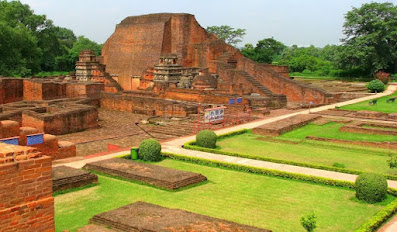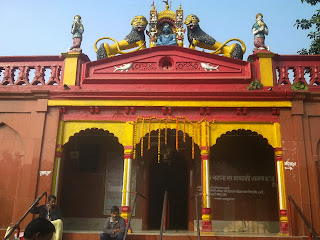NALANDA UNIVERSITY BIHAR - one of the world's first residential universities and a UNESCO World Heritage
India has always been revered as a land of learning. From ancient sciences to arts, philosophy, and literature, the country has always been a destination for learners from all over the world. Ancient universities and institutes have drawn travelers and philosophers who sought knowledge and wisdom from this rich Asian region. The Nalanda University is one such place that stood as an education hub from 500 CE to 1200 CE. Even today, after centuries of invasion and depletion of the structure, the ruins and the site still stand as a symbol of India’s illustrious past.
In 2016 the ruins were designated a UNESCO World Heritage Nalanda was one of the world’s first residential universities, i.e., it had dormitories for students. It is also one of the most famous universities.It accommodated over 10,000 students and 2,000 teachers. The university was considered an architectural masterpiece, and was marked by a lofty wall and one gate. Nalanda had eight separate compounds and ten temples, along with many other meditation halls and classrooms. On the grounds were lakes and parks. The library was located in a nine storied building where meticulous copies of texts were produced. The subjects taught at Nalanda University covered every field of learning, and it attracted pupils and scholars from Korea, Japan, China, Tibet, Indonesia, Persia and Turkey. During the period of Harsha the monastery is reported to have owned 200 villages given as grants.
According to pilgrims’ accounts, from Gupta times the monasteries of Nalanda were surrounded by a high wall. The excavations revealed a row of 10 monasteries of the traditional Indian design—oblong brick structures with cells opening onto four sides of a courtyard, with a main entrance on one side and a shrine facing the entrance across the courtyard. In front of the monasteries stood a row of larger shrines, or stupas, in brick and plaster. The entire complex is referred to on seals discovered there as Mahavihara (“Great Monastery”). A museum at Nalanda houses many of the treasures found in the excavations.
The premise of this ancient institute stretches across 1.5 KM in length and 0.75 KM in width. Being the largest educational center of its time, Nalanda University housed 11 monasteries, an expansive library spread between three towers and an astronomical center - a sign of an advanced academic culture. For residential students and travelers, there were 300 rooms and eight halls to host meetings and events. The highlight of the entire structure is the SariputtaStupa, with multiple flights of stairs leading to the center and an apex to hold a Buddha shrine.The entrance of many of the viharas in Nalanda University ruins can be seen with a bow marked floor; bow was the royal sign of Guptas’.
Nalanda was an ancient Indian university. It was one of the famous universities of the world and the first Indian residential university. It was the epicenter of education in ancient India.Nalanda University was in Bihar. It was about 88 kilometers from Patna.Nalanda University was established during the Gupta Dynasty. It remained as best university for a long time until Bakhtiyar Khilji destroyed it.The university had a large campus. It was spread on 14 hectares of land. University had ten temples, many classrooms, meditation centers and a big library. Many people even today get astonished by the architecture of the buildings. Nalanda university’s library was one of the biggest library of the world at that time. It had large collections of books, manuscripts. It was called as Dharma Gunj (Mountain of Truth) or Dharmagañja (Treasury of Truth). Library was divided into three buildings- Ratnasagara, Ratnadadhi and Ratnaranjaka. Among these buildings, Ratnasagara was nine storied building. The library did not only have religious manuscripts but it also contained large collection of books on literature, astrology, astronomy, and medicine. Vastness of the library can be understood from the fact that it took three months to burn down when invaders set fire to it.The Nalanda University had a great influence of Buddhism. Many Buddhist used to teach here. It is believed that Buddha also visited the university.
The period from which Nalanda ceased to exist was a time that the great universities of the western world came into being, marking the shift in knowledge production and dissemination from the East to the West. Only Al Azhar in Cairo (972 CE), Bologna in Italy (1088 CE) and Oxford in the United Kingdom (1167 CE ) had been founded before the destruction of Nalanda.
If you are inclined towards ancient Indian education and architecture, then a visit to the Nalanda University must be on your travel list. Nalanda attracts a huge number of tourists every year. It is well connected by road or rail. Rajgiri is the nearest train station, However the frequency of trains is higher at Patna and Gaya. The best time to visit Nalanda is between October and March.










Nalanda’s legacy as one of the world’s first residential universities is truly inspiring. Its revival beautifully connects ancient wisdom with modern education. A proud symbol of India’s rich heritage. https://saveplus.in
ReplyDelete